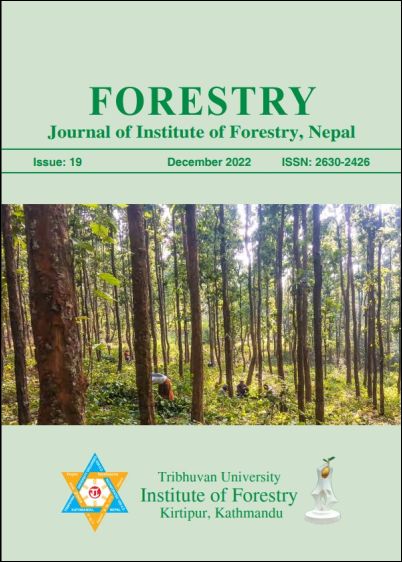Avian Diversity and Seasonal Abundance in Banpale Forest, Kaski District, Nepal
DOI:
https://doi.org/10.3126/forestry.v19i01.55699Keywords:
Birds, Conservation Value Index, Habitat, Insectivore, Trail, UniversityAbstract
Baseline information on bird diversity is essential for biodiversity monitoring and conservation as birds are often considered a key indicator of ecosystem health and ecological balance. Studies from other countries suggest that green patches, like university campuses, play a vital role in local bird conservation in urbanized regions. In the Kaski district of Nepal, the study of bird diversity is limited to the larger lakes of the Pokhara valley. Banpale Forest, one of the few green patches in the Pokhara valley, is considered a hotspot for birdwatching; however, no proper studies have been conducted to explore the bird diversity. This study examines the species diversity and seasonal abundance of birds in the Banpale Forest of the Institute of Forestry, Pokhara. Two trails built by villagers and students for walking were used as transects for the study. A total of 2,975 bird individuals of 125 species were counted in the survey conducted from June 2018 to May 2019, with 12 field visits along a 2.17km trail. Passeriformes (54.03%) and Accipitridae (13.71%) were the dominant order and family respectively among the recorded species. Species diversity (H’) was higher in the winter season (H’=3.99), with species richness of 13.26 and species evenness of 0.88. Insectivores (n=54) were the dominant foraging guilds among the recorded species. The high avifaunal diversity and conservation value index of Banpale Forest indicate the need for conservation planning in the region.
Downloads
Downloads
Published
How to Cite
Issue
Section
License
© Tribhuvan University, Institute of Forestry




